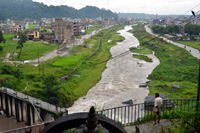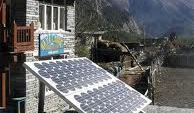
Highways of death
High risk levels and pathetically inadequate disaster management plans tar Indian roads as danger zones

High risk levels and pathetically inadequate disaster management plans tar Indian roads as danger zones

Amulya Ratna Nanda, registrar general and census commissioner of India, feels the country has made some progress in bringing down its growth rate
<p><span style="font-size:12px;"><span style="font-family: verdana,geneva,sans-serif;">Preparations for the Rio+20 United Nations conference on sustainable development have begun, but the first round of

The next time you see a spoilt brat, do not blame his parents. It could be just because of some extra lead in his bones

Small-scale industries: Where regulations are meaningless and pollution control an unaffordable luxury. Can they leapfrog to cost-effective technologies and find shelter in policies that provide reservation in pollution-free sectors?<p> <font face=arial

NATURE which inspires keen sentiments in many a poet and environmental activist, is now the subject of an annual report of the World Bank (WB) group. Reading the tedious report, one gets the

Overexploitation, increasing salinity and industrial pollution are threatening groundwater resources in several parts of the country

Resource crunch and poor regulatory processes have made small-scale industries the pariahs of India"s environment
Nepal is slated to be a major hydropower supplier in South Asia with the recent signing of a Memorandum of Understanding (MoU) with the Australian government for a US$ 590-million 360-megawatt project on the Karnali river. But Nepal"s big projects, like t

<p><span style="font-size:14px;"><strong>Bagmati River</strong></span></p> <p><img alt="" src="http://www.indiaenvironmentportal.org.in/files/country/nepal/bagmati_hl.jpg" style="border-width: 2px; border-style: solid;" /></p> <p>The Bagmati Action Plan is the latest attempt to heal the river system, from its origins in the Shivapuri hills to Chouva where it leaves the valley. It was launched in 2008 for the period 2009-14, and proposes a budget of close to 15 billion Nepalese rupees spread over five years (in comparison, in 2008 – 2009, the total allocated for the Bagmati and its tributaries was Rs. 1,394.24 million).</p>

That is what Lata Srikhande, a Pune housewife, did to solve her domestic waste disposal problems. Now her neighbourhood is following suit

ANY ATTEMPT at promoting awareness of the interdependence of humans and the environment is a welcome step. This is especially true of the need to tell children about the harm that has been done to

Papua New Guinea has come a long way from a society that began cultivating crops in 8000 BC and had no need for a market economy. It came in touch with the outside world just about 100 years ago. Today, it exports minerals and imports food. The people com

The beautiful resort is fast greying under the onslaught of modernity

Management of solid wastes is a corollary of triumphing civilisation. But how does one recycle or reuse increasing solid wastes in radically expanding cities ?

<p><span style="font-size:14px;"><strong>Renewable Energy</strong></span></p> <p><img alt="" src="http://www.indiaenvironmentportal.org.in/files/country/nepal/biogas_hl.jpg" style="border-width: 2px; border-style: solid;" /></p> <p>The major energy resource base in Nepal consists of biomass, hydroelectricity, petroleum products, natural gas, and coal reserves. Among the entire energy resource base, it is evident that biomass is the dominant resource base of the country with respect to its utilization. Biomass provided 86% of the total energy consumption, petroleum 9%, which is mainly consumed by urban areas, electricity only 2% and renewable 1% of the total energy consumption.</p>

A haze of pollutants, the size of the US, covers a part of the Indian Ocean sky creating fears of acid rain, low rainfall and a change in environmental politics
<p><strong><img alt="" src="http://indiaenvironmentportal.org.in/media/iep/homepage/msanwal_blog.jpg" style="width: 600px; height: 117px;" />Moving sustainability from ideas to reality and regaining the

Are the new industrial siting rules a boon or a bane?

Government proposes. Industry disposes. Programmes for cleaning up have very largely gone by the wayside